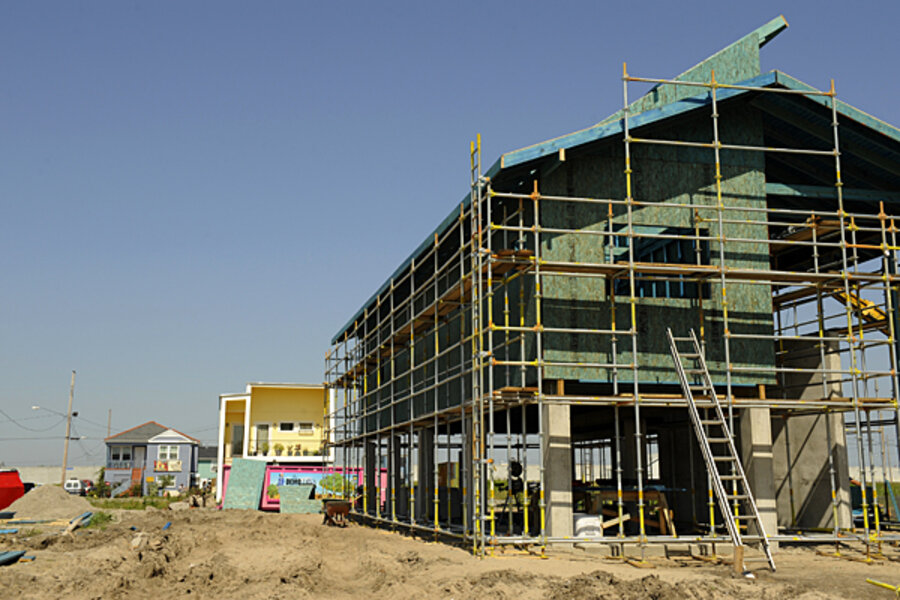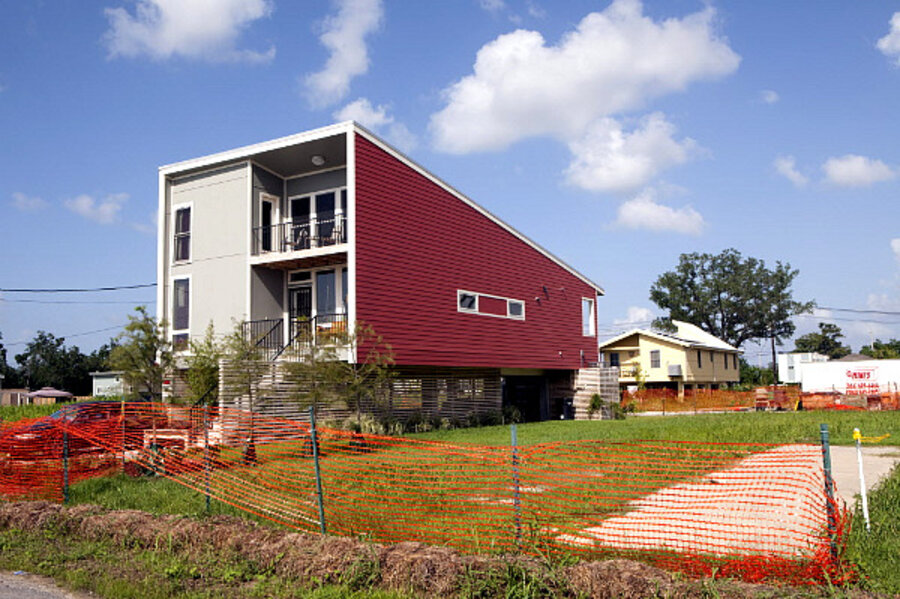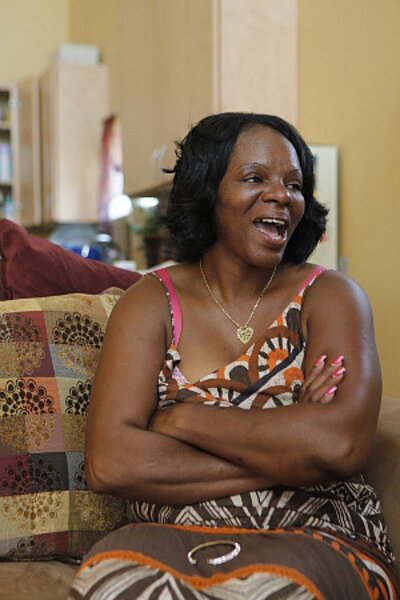After Katrina, New Orleans housing goes green
Loading...
| New Orleans
Excess is a virtue in New Orleans – luxurious cream sauces, deeply fried seafood, and late night jam sessions that can last until the sun comes up.
So one of the unexpected trends to emerge in the five years since Hurricane Katrina flooded this city in 2005 is entrepreneurship focused on green technology and home building.
Conservation was never a top priority of those choosing to live here, but that is changing, some say, because of the lessons learned from first being displaced and then trying to devise methods to cooperate with the land, not fight against it.
IN PICTURES: Hurricane Katrina five years later
Beth Teel Galante, a director for Global Green USA, which has built five homes in the city’s Holy Cross neighborhood and has plans for an 18-unit apartment building, says most people were “apathetic” regarding issues like sustainable architecture and building materials.
“We have never been critically engaged about demanding reform. So we learned the hard way the true value of community,” Ms. Galante says.
Public and private partnerships
Public and private partnerships are taking shape in New Orleans, turning the city into an incubator for new home building featuring natural resources and materials that require less cost to maintain.
Entrepreneurial financiers and environmental non-profits consider devastated neighborhoods like the Lower Ninth Ward and Holy Cross blank slates for designing and constructing new homes and tweaking sustainable technologies that are their hallmarks.
Global Green President Matt Peterson says New Orleans became the perfect city for testing utopian endeavors because “the failure of government” to rebuild in the wake of Katrina left entire swatches of empty land.
'A renaissance in green building'
It provided non-profits and social entrepreneurs the opportunity to put in place social innovations, he says, creating a renaissance in green building that will not only serve as a template for New Orleans but for other cities struggling to address affordable housing issues.
The most visible endeavor is the Make It Right Foundation, headed by film actor Brad Pitt.
An avowed fan of architecture and of the city itself, Mr. Pitt began his involvement by hosting a design competition for sustainable homebuilding. This turned into a long-term relief organization, providing low-income residents who were displaced but returned to find their previous home swept off its foundation the chance to purchase affordable and storm resistant homes.
Make It Right homes do not look like anything associated with New Orleans. Raised to provide more protective living area in the event of a second flood, their sleek angles and bright colors make them look more suited to the beaches of Malibu or Miami. They are built with ample use of sunlight, solar panels, mold resistant drywall, dual flush toilets, and metal roofs that absorb less heat and are meant to reduce utility costs.
So far, there are 39 such homes with an eye to building a total of 150.
Besides providing housing in an area overgrown by 10-foot high grass where homes once stood, the foundation is also allowing the University of New Orleans Engineering School to conduct structural tests of certain advanced building materials. It has also held sessions for local concrete installers on how to use pervious concrete, which is capable of absorbing water that limits runoff into the surface area.
Existing homes being retrofitted
Besides Make It Right and Global Green, other groups are helping local homeowners retrofit existing homes with more eco-friendly materials to lower energy costs.
Over ten days in March, Historic Green, a volunteer group, helped replace windows and install installation in homes, outfit a local playground with solar power lights, and construct ten residential rain gardens. The New Orleans Preservation Resource Center is also retrofitting homes in the area; one is being turned into a neighborhood community center that will provide green building technology training to local residents.
At the invitation of the state-run public school system, Global Green has also become involved in the rebuilding of new schools in the city and is helping write policy for how they can be restored with energy-efficient materials and solar panels.
Galante of Global Green USA is a co-chair of a sustainable energy team organized by recently elected mayor Mitch Landrieu He says the city’s new “green economy” could generate about 90,000 clean energy jobs over the next 20 years as the city becomes a model for the rest of the country.
The group hopes to help create an advisory council representing all four Gulf Coast states that will work with state governments to encourage and sustain alternative energy manufacturing jobs and monitor wetlands restoration caused by the recent Gulf oil spill. So far the group helped convince Louisiana lawmakers to push for a solar tax credit for low-income housing built in the state.







